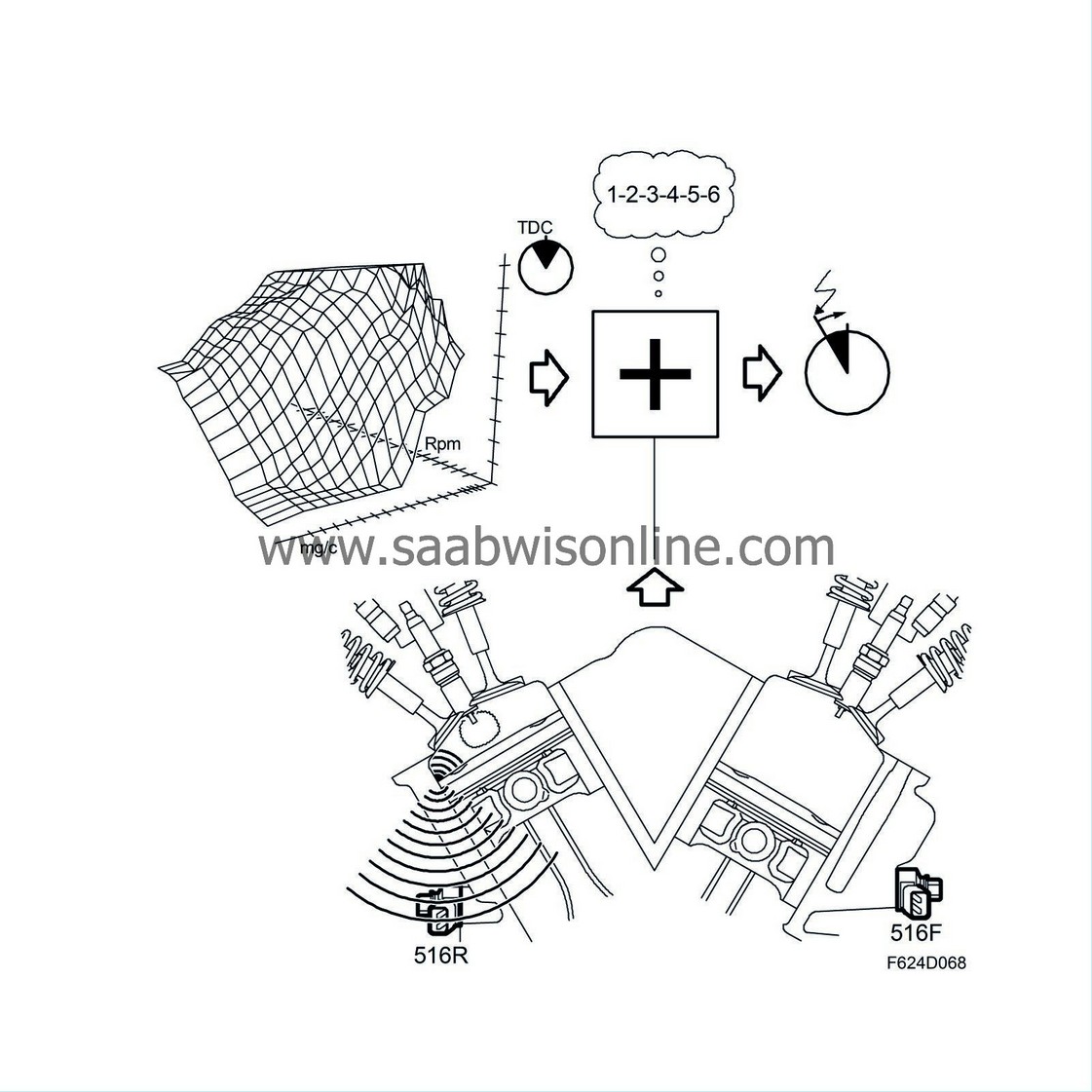Knock control
| Knock control |
General
Combustion in an Otto engine can be beneficial (normal combustion) or destructive (knocking).During normal combustion, the air/fuel mixture is ignited by the spark form a spark plug. The flame expands in the combustion chamber originating from the centrally located spark plug.
Normal combustion takes place in a controlled fashion at a speed in the range 20-40 m/s, depending on the prevailing operating conditions.
The pressure in the cylinder now rises in a controlled manner as the combustion proceeds and maximum pressure will be attained at approx. 16-17 degrees ATDC. Occasionally, the pressure and temperature in the cylinder are so high that the unburned air/fuel mixture can self-ignite, either before or after the spark has ignited. This self-ignition usually takes place at very high speed and therefore releases large amounts of energy into the cylinder in a very short time.
This generates pressure waves that can move at supersonic speed. Uncontrolled knocking could damage the engine through, for example, heat damage to pistons and cylinder heads. Pressure waves can cause fatigue damage to pistons and cylinder heads. It is necessary to distinguish between controlled knocking that is handled by the engine management system and uncontrolled knocking that can occur if the engine is run on poor quality fuel at high air temperature and high altitude.
A high compression ratio is advantageous to engine efficiency and consequently fuel consumption.
The engine's propensity for knocking increases as the compression ratio increases. The engine compression ratio is thus selected with both engine knock propensity and fuel knock propensity in mind.
Knock control in modern engines is not a safety function but a standard function. Consequently, it is normal for knock control to be active during normal driving. At times in certain operating conditions, the engine can be heard knocking. This is controlled knocking that can be considered normal.
| Control |
General
Knock control is individual to each cylinder and is adaptive.
Detection
The engine is equipped with two piezoelectric knock sensors - one per cylinder bank. The sensors register engine working noise. Knocking generates a characteristic noise, the frequency of which depends on the factors such as the shape of the combustion chamber. By filtering the sound from the sensors through a bandpass filter that only allows sound within the frequency characteristic of knocking to pass through, some of the engine's other noises can be filtered out.Adaption
Adaption of knock detection is done by analysing the level of the engine's normal working noise under certain driving conditions. Adaption is individual to each cylinder bank.Evaluation

The signal that has been bandpass filtered is compensated with the current knock adaption and is then analysed for any knocking. To further reduce risks, ECM only "listens" for knocks within a certain number of crankshaft degrees after the spark was fired, i.e. when knocking usually occurs. The signal is evaluated for knock intensity and a raw value for knocking is obtained. This raw value is further processed as a different intensity of the raw value is allowed at different engine loads/engine speeds.
The processed raw value can then result in one of the following countermeasures:
| • |
Ignition retardation
|
|
| • |
Ignition retardation and fuel enrichment
|
|
| • |
Ignition retardation, fuel enrichment and torque reduction
|
|



